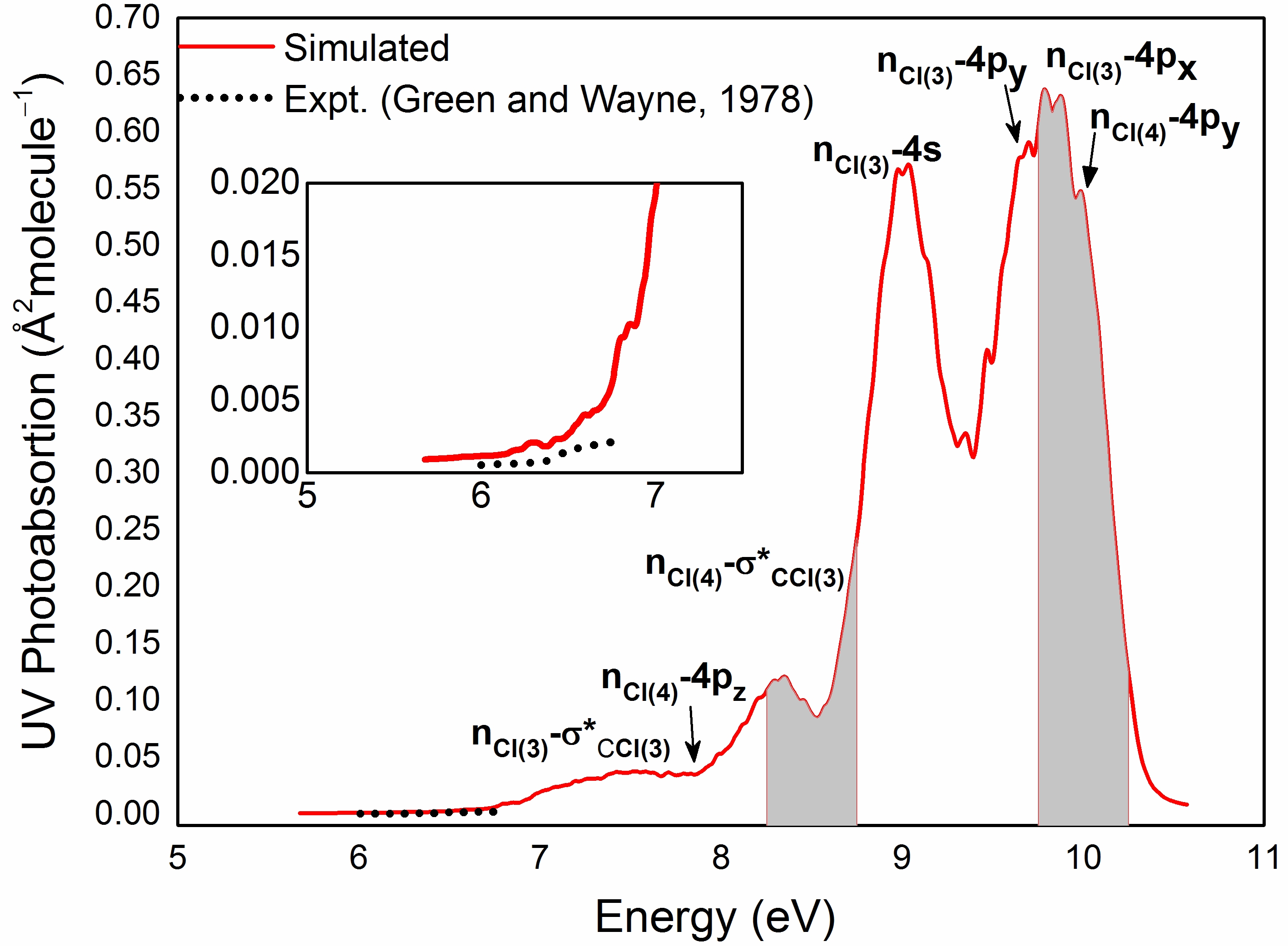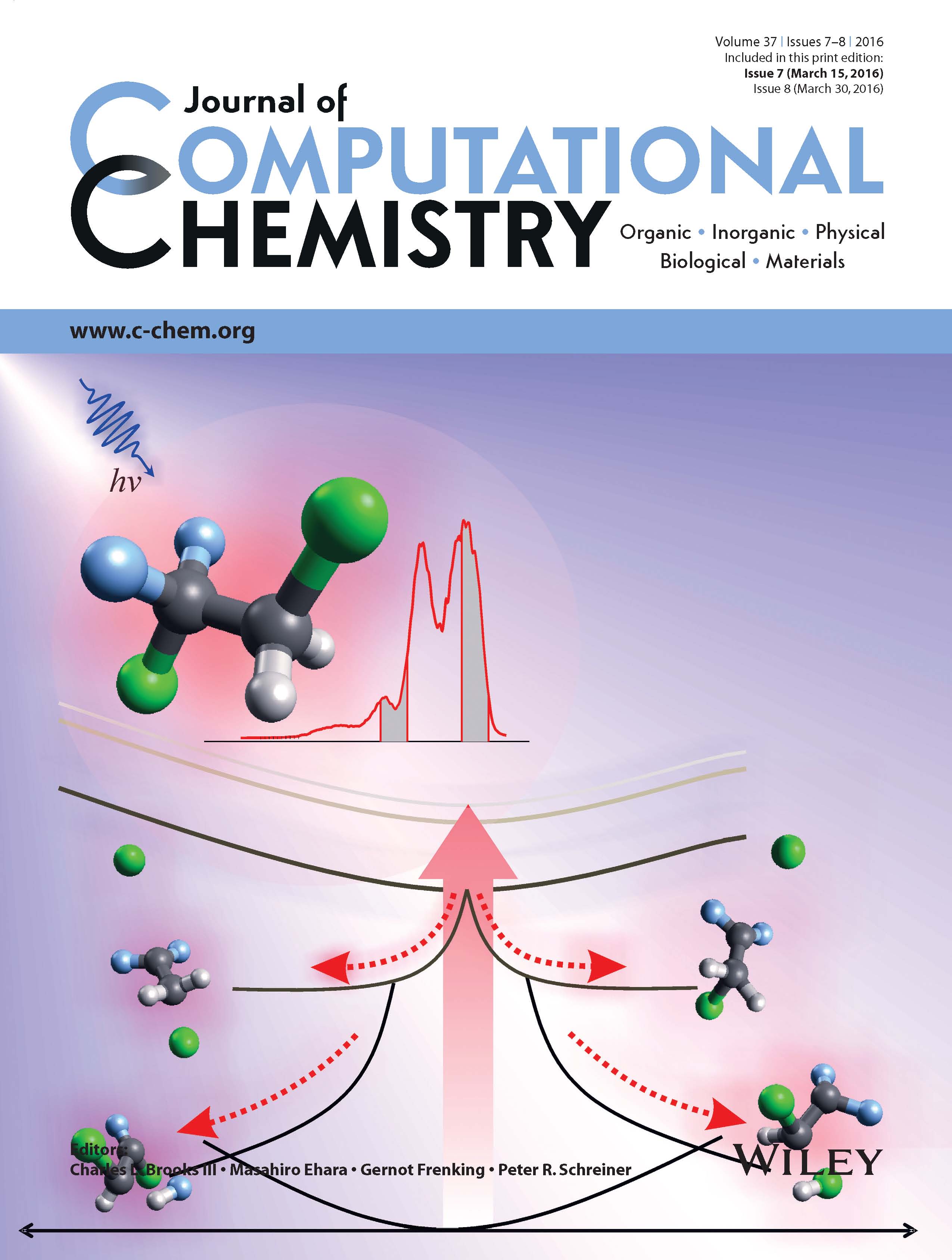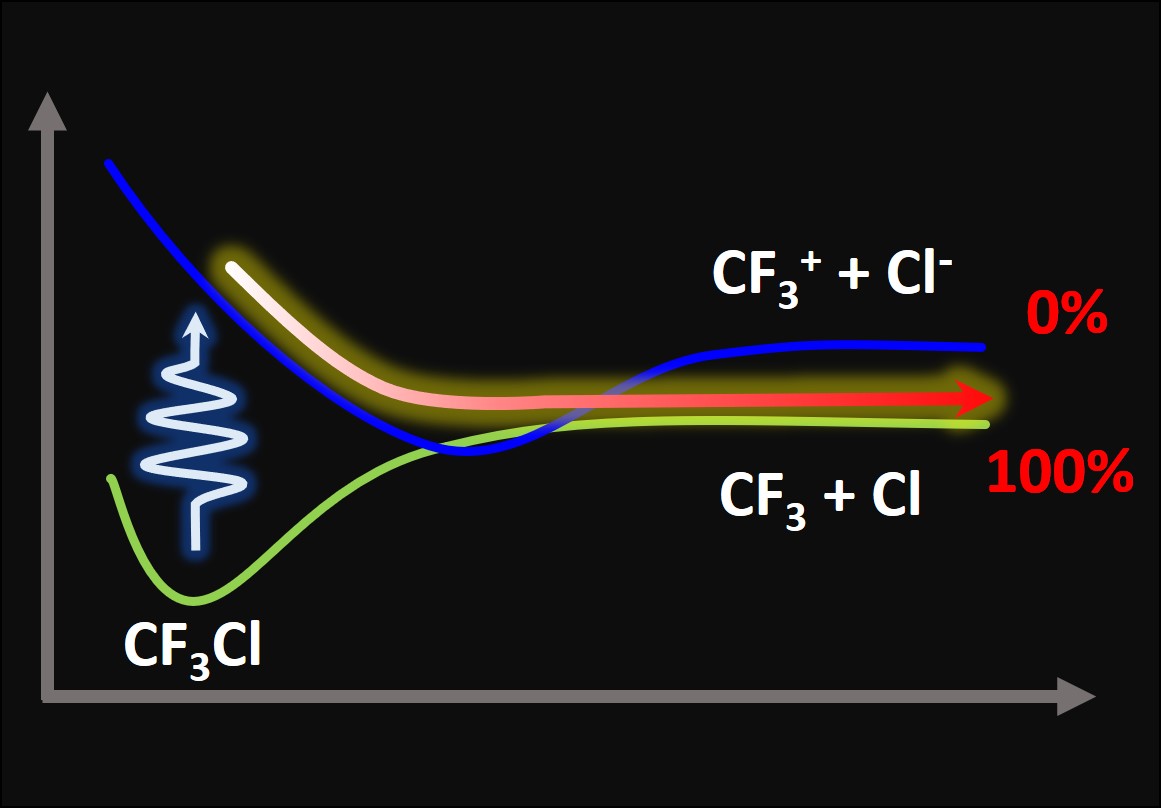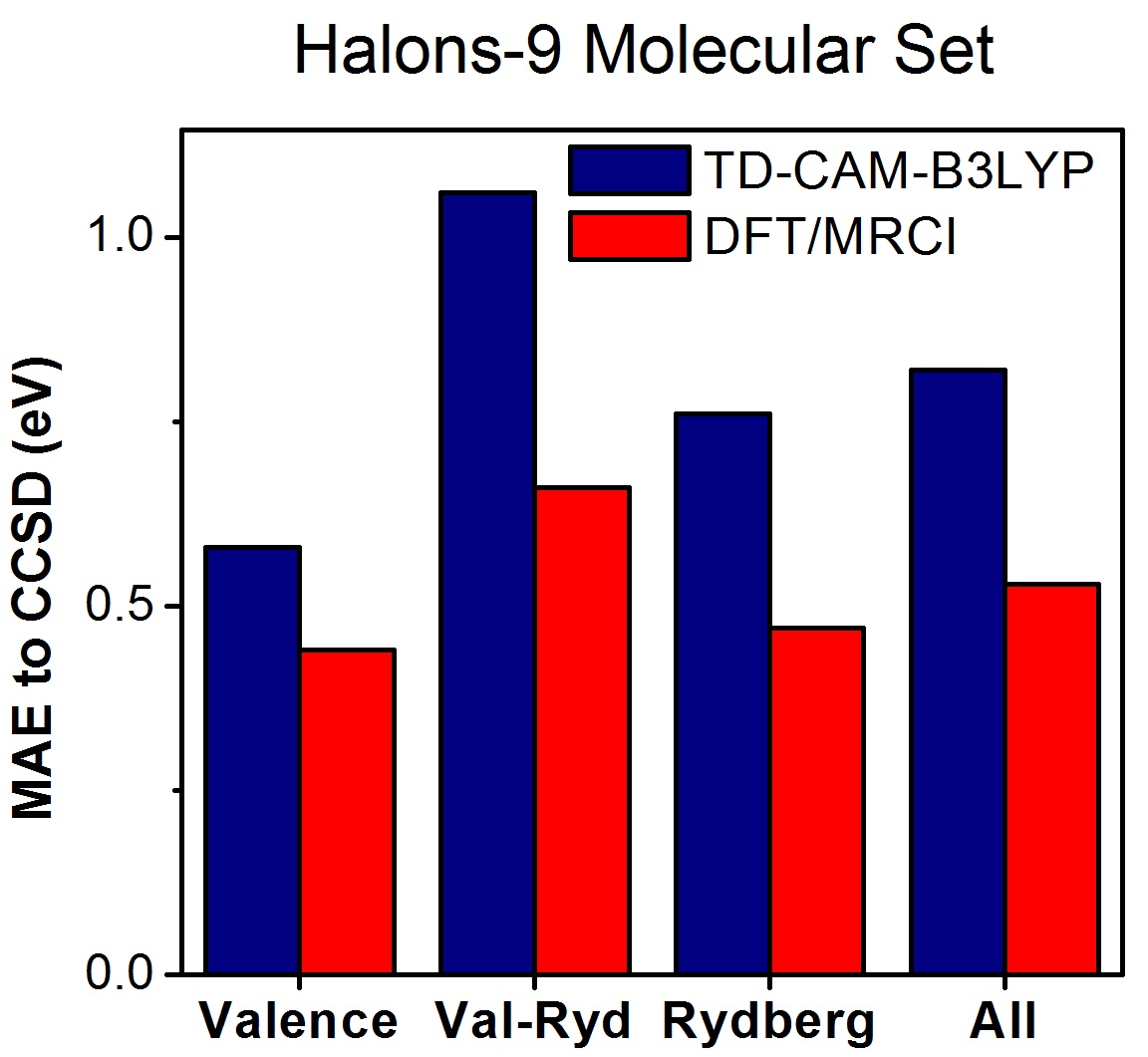HCFC-132b is an important industrial compound with strong environmental impact. Nonadiabatic dynamics explains how UV induces its photo-decomposition in the sub-picosecond scale.
HCFC-132b (CF2ClCH2Cl) was the major compound used for replacing CFC-113 (CF2ClCFCl2) in different industrial applications. However, its availability is limited due to its toxicity level. As other HCFCs, HCFC-132b has been targeted to have its production gradually reduced until 2020.
While it is around, we want to know what happens to HCFC-132b when released in the environment. With focus on its photochemistry, it has been shown long ago that upon UV irradiation, it decomposes into different photoproducts, specially atomic chlorine [1]. How does this process take place? How much does it depend on the radiation wavelength?
In a project led by Gessenildo Rodrigues in collaboration with Elizete Ventura and Silmar do Monte from Federal University of Paraiba (Brazil), we have addressed these questions [2]. Using several computational-chemistry methods, we investigated how HCFC-132b absorbs UV and dissociates in the sub-picosecond time scale.
HCFC-132b has intense absorption bands at 9 and 10 eV, as shown in the simulated spectrum below. This spectrum was computed with the nuclear ensemble approach based on TDDFT using the ωB97XD functional. In the paper [2], we also discuss results computed with other functionals as well as with CASPT2 and CCSD(T).
Knowing the spectrum, we did surface hopping simulations based on TDDFT to investigate the subpicosecond dynamics starting after excitation at 8.5 and 10 eV (the gray areas in the graph).
The main challenge to do such simulations is to deal with the large number of excited states. Exciting at 10 eV, for example, we have to take into account 24 of them.
But the excited-state relaxation itself is ultrafast: starting from 8.5 eV, the excited-state lifetime is only 106 fs; starting from 10 eV, it is 191 fs.
During these short times, HCFC-132b breaks in diverse smaller chemicals. At 8.5 eV, single and double atomic chlorine ejection dominates.
At 10 eV, however, the dissociation pattern changes. HCl becomes the most abundant product and several other products not observed in lower energy are predicted as well, including HF and Cl.
In the paper, we discuss how each of these reaction mechanisms are activated, based on the population flow into different states during the dynamics.
Experimental [1] and simulated [2] fractions of these products are shown in the Table below:
| Experimental (%) | Theoretical (%) | ||
| 8.43 eV | 8.5 eV | 10.0 eV | |
| 2Cl | 41 | 42±8 | 9±5 |
| HCl | 4.8 | 19±7 | 33±8 |
| CFBa / Cl | 41.3 | 34±8 | 21±7 |
| FCl | – | – | 2±2 |
| HF | – | 5±4 | 23±7 |
| F | – | – | 3±3 |
| H | – | – | 3±3 |
| CC | – | – | 6±4 |
Examples of trajectories following several of these dissociation channels can be watched in this movie:
References
[1] T. Yano, E. Tschuikow-Roux, Photodecomposition of 1,1-Difluoro-1,2-dichloroethane at 147 nm, J. Phys. Chem. 83, 2572 (1979).
[2] G. P. Rodrigues, E. Ventura, S. A. do Monte, M. Barbatti, UV-Photoexcitation and Ultrafast Dynamics of HCFC-132b (CF2ClCH2Cl), J. Comput. Chem., doi: 10.1002/jcc.24260 (2015).
You can read more about the photochemistry of this type of compounds in:






2 Comments
More about HFCs | Light and Molecules · February 16, 2016 at 8:53 AM
[…] work on HFC-132b has been chosen to illustrate the cover of the last issue of the Journal of Computational […]
The Halons-9 Molecular Set | Light and Molecules · November 11, 2016 at 7:21 PM
[…] question hit us recently when we started looking into the photochemistry of HCFC and brominated compounds. In spite of their importance for green-house effect and ozone depletion, […]
Comments are closed.